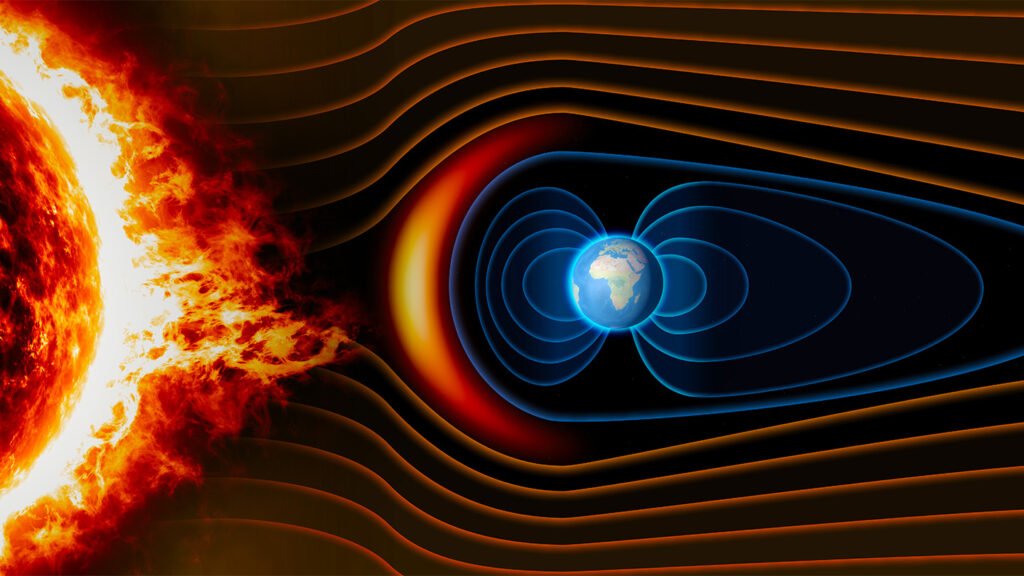Researchers suggest that between 590 million and 565 million years ago, Earth’s magnetic field was much weaker than it is today, with far-reaching effects on life development. This weaker field could explain the higher levels of oxygen recorded in Earth’s atmosphere and oceans during that time and the subsequent proliferation of macroscopic marine animals. The presence of a weaker magnetic field during this period, particularly during the Ediacaran Period, when oxygen levels increased, may have allowed for the evolution of larger marine animals due to the higher oxygen levels available.
The planet’s magnetic field results from the churning of molten iron in Earth’s interior and has a strength of about 0.00005 tesla, much weaker than magnetic resonance imaging machines. Over millions of years, the strength of Earth’s magnetic field fluctuates, with magnetic field reversals occurring periodically. Recent studies of rocks from Canada and Brazil dating back to 565 million and 590 million years ago, respectively, have shown that Earth’s magnetic field was significantly weaker during those times, with the lowest field strength ever measured recorded in the Brazilian rocks.
The coincidence of a weak magnetic field around the Ediacaran Period when oxygen levels increased in the atmosphere and oceans is intriguing. The collapse of the magnetic field during this period may have left Earth vulnerable to energetic cosmic particles that could have broken apart water molecules in the atmosphere. Hydrogen would have escaped into space, leaving behind oxygen, which would have enriched the atmosphere and oceans with more oxygen. This oxygenation may have provided the necessary conditions for the development of larger, more mobile marine animals that emerged during the Ediacaran Period.
While there are conceptual leaps in the research, the measurements are solid and suggest a plausible link between the weak magnetic field, increased oxygen levels, and the evolution of larger marine animals. This research opens up new ideas and possibilities for understanding the impact of Earth’s magnetic field on the development of life. By considering the relationship between magnetic field strength, oxygen levels, and the evolution of life forms, researchers can gain insights into the complex interplay between Earth’s geology, atmosphere, and life on the planet.
Overall, the study highlights the importance of Earth’s magnetic field in shaping the conditions for life on the planet. By uncovering the potential effects of magnetic field fluctuations on oxygenation and the evolution of life, researchers can better understand the intricate balance of factors that have influenced the development of life on Earth. Studies like this one help to expand our knowledge of Earth’s history and offer new perspectives on the connections between geophysical processes and biological evolution.

